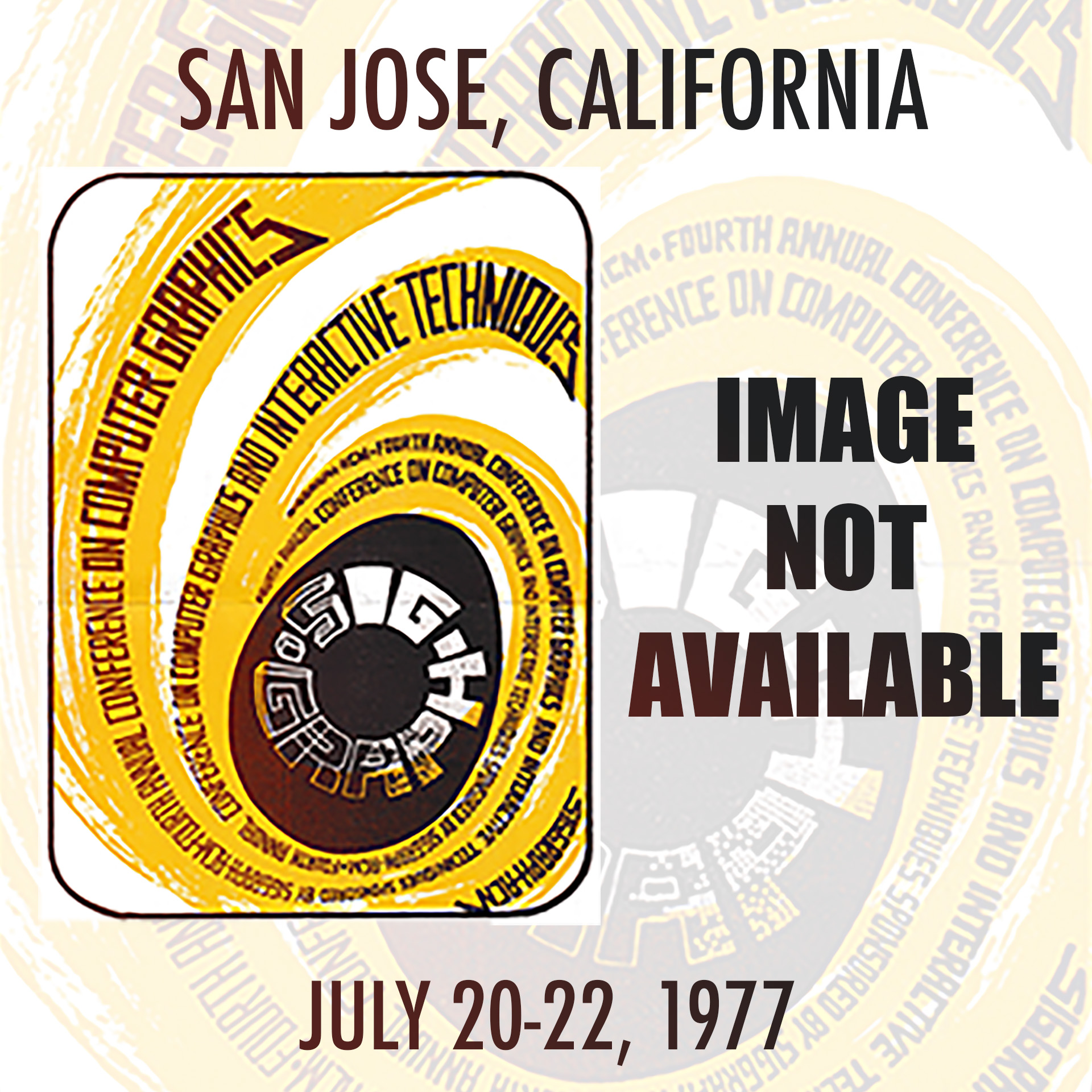“Computer art for computer people – a syllabus” by Hertlein
Conference:
Type(s):
Title:
- Computer art for computer people - a syllabus
Session/Category Title: Education
Presenter(s)/Author(s):
Moderator(s):
Abstract:
Given the present state of the art, it is easier to introduce and teach computer art to people who have some background in computer science. Although there are many art-oriented systems for non-programmers, a study of the work of these artist-students reveals that their final products do not surpass the work of programmer-artists. Experience in working with artists and non-programmers during the past seven years has repeatedly shown that computer people, with special guidance and instruction, can and do produce professional looking computer art works that rival and often surpass the works of intermediate to advanced artists who engage in this new medium. However, working with Computer Science people poses unique requirements. Although they produce professional looking works within one semester, their orientation is dominantly practical, and often they will abandon their artistic efforts after the conclusion of their course of study, to aim at more practical, job-oriented skills. This paper describes in detail the course objectives, and includes a listing of lecture/discussiontopics, and offers the reader a schedule of week-by-week presentations and explorations for development in laboratory sessions.
References:
1. Hertlein, G., “The Programmer as an Artist,” Proceedings, A Day of the Computer Arts, NCC&E, New York City, N. Y., June, 1973.
2. , “The Artist and Computer Art,” Proceedings, CCUC/3, Computers in the Undergraduate Curriculum, Georgia State University, Atlanta, Georgia, June, 1972.
3. , “The Microfilm Plotter and Computer Art,” Proceedings, CCUC/6, Computers in the Undergraduate Curriculum, Texas Christian University, Fort Worth, Texas, June, 1975.
4. , “Computer Art – A New Course Offering for General Education,” Proceedings in the Undergraduate Curriculum, CCUC/8, Michigan State University, East Lansing, Michigan, June, 1977.
5. Franke, Herbert, “Art of the Technical World,” Computer Graphics and Art, Volume 1, No. 1, February, 1976, p. 10-11.
6. Hertlein, G., “A Beginning Science of Art,” Proceedings, A Day of the Computer Arts, NCC&E, New York City, N. Y., June, 1973.
7. Snow, C. P., The Two Cultures, “Rede Lecture,” London, 1959.
8. Exhibition, CCUC/3, Georgia State Univ., Atlanta, Georgia, June, 1972. ICCH/I, Univ. of Minnesota, Minneapolis, Minn., July, 1973. NCC&E, New York City, N. Y., June, 1973. , CCUC/5 Washington State Univ., Pullman, Washington, June, 1974. Exhibitions A, B, C, Academic Year 1974-75, General U. S. Distribution.
9. August Issues, Computers and People, 1974, 1975, 1976, Art Editor, including various papers, articles, since 1970. Volume 1, Numbers 1 – 4, Computer Graphics & Art, Editor, 1976. Vol. 2 in process.
10. A Day of the Computer Arts, NCC&E, June, 1973, New York City, N.Y., Special Art Proceedings. Catalog, ICCH/2, International Conference of Computers and the Humanities, Univ. of So. California, April, 1975.
11. Mueller, Robert E., Inventivity, New York: John Day, 1974.
12. Naughton, John; McGowen, Clement; Horowitz, Ellis; Brown, John R., “Session: Structured Programming – Concepts and Definitions,” Computer, June, 1976.
13. Kernighan and Plauger, Elements of Programming Style, New York City: McGraw-Hill, 1974.
14. Hertlein, G., “The Importance of Art Design Techniques and Material Development – Their Effects in Achieving Art Quality in Computer Art,” Computer Graphics and Art, Vol. 2, No. 3, August, 1977 — “Week-by-Week Syllabus, Computers and People, Vol. 26, No. 8, August 1977.
15. , “Computer Art: Steps Towards a Measurable Analysis,” Computers and People, May, 1974, Vol. 23, No. 5, p. 13-17.
16. op. cit., /3/ and Franke, Herbert, “On Producing Graded Black and White or Color Graphics in Combination with a Photographic Technique,” Leonardo, 1974, p.333-335.
17. Computers and the Humanities, Joseph Raben, Editor, Queens College, Flushing, N. Y.




